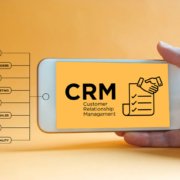Top 4 “Must Haves” Memory Care Benefits
By the time that families start researching memory care communities, they have usually done everything humanly possible to keep their loved one safely at home. They have worked their way through adult day care, homecare, household safety retrofits, support groups and huge doses of family participation in meal preparation, personal care, transportation, medication management and socialization. At some point, their heroic efforts leave them exhausted, stressed out, frustrated, and open to other solutions. That is when our phones ring.
Our job is to listen, empathize and understand that each person and their story because each situation is unique. It is important to acknowledge the family involvement and honor their successes. It is a very emotional decision to entrust a precious loved one who lacks the ability to advocate for themselves to unrelated caregivers.
Here are some benefits that every memory care program must have to reassure families as they work through this difficult decision.
1. An Environment That Supports The Success of The Residents
It is very difficult to adapt a typical residential home environment for seniors with Alzheimer’s as it progresses since the disease creates unique impairments requiring a specialized environment. Residents thrive when they can navigate their environment independently and successfully. Visual impairments can be a barrier so ensuring that lighting, floor covering, color contrast and appropriate tableware & utensils are integrated into the environment is key.
It is best to avoid:
- Carpets with flowers or patterns (residents may perceive these as something to pick up)
- Wallpaper and murals (residents may perceive these as something to pick at)
- Carpets with borders (residents may perceive these as holes or gaps)
It is best to include:
- Adaptive lighting to simulate natural outdoor lighting patterns to reduce sundowning.
- Even lighting so there are no dark patches in the hallways.
- Contrasting paint color behind toilets, & contrasting toilet seats to visually distinguish the toilet and sink to encourage independence & success.
- Contrasting table cloths and dishware to encourage independence & success during meals.
2. A Memory Care Culture of Choice and Accessibility
As much as possible, present opportunities for the residents to make choices to foster independence and respect – even non-verbal residents can point. We had one resident who wanted only to wear her favorite yellow dress and became agitated and unhappy if it was in the laundry. So we had her family go shopping for a selection of yellow dresses and take home everything else. Every morning she was able to choose from a selection of yellow dresses and that solved the problem. Choices should be allowed about when to get up in the morning, what to wear, what to eat and drink and how to spend their day. Resident Choice Dining involves preparing two plates and offering options for residents to select. It takes a small amount of time and effort to set up, but once it is implemented, food costs and labor is budget neutral. Likewise, always keep back up supplies to make a sandwich, toast or a snack and have these available for the overnight shift in case a resident wakes up hungry at night.
3. Personalized Programming Based on Each Resident’s Background & Life Story
One of the greatest fears expressed by families is that the staff will not know or understand the needs of their loved one. They are convinced that no one will be able to care for their loved one like the family does. We had a resident who opened the first pre-school in town and every morning she would wander the halls looking for the children. The program director went to a yard sale and picked up an old school desk & chair and reading primers. She also encouraged the staff to bring in their children’s artwork and homework so there was always something waiting on her desk that was placed right outside her apartment door. Mornings were much better for this resident and the staff. So, it is important to have tools and systems in place to capture the essence of every resident including:
- Meeting with the family to capture a personal life history to learn the familiar people, places, hobbies, routines, schedule, interests, career, family members, and social and spiritual preferences. Use this to create a personalized care plan & schedule.
- Keeping a binder of the life stories for the staff to review, and coach them on how to incorporate this in personalizing the approach for care and interaction.
- Have a pre-move-in team meeting to plan a successful transition.
4. Dedicated and Trained Memory Care Staff
Families work hard to provide care with little formal training, previous experience or respite. It is easier for them to entrust their loved one to a community with dedicated, trained staff rather than a rotating schedule of changing relationships. Being able to demonstrate that staff is selected to work with memory-impaired residents and that there is comprehensive and ongoing training provided will increase confidence. Technology is great, but nothing comes close to the impact of a caring, committed staff with the skills and competency to manage residents throughout the disease process.
Does your community have difficulty performing any of these “must have” benefits? Let’s Chat!














Impressions Memory Care at Oakleigh of Macomb features two specialized and secure neighborhoods designed to correspond to one’s specialized care needs. In addition to offering two styles of apartments, residents also enjoy an exclusive courtyard, activities lounge and dining rooms.
Thank you for sharing the key features that improve memory care benefits. Each element highlighted is noteworthy for enhancing memory care effectiveness.